Terry Odell's Blog, page 267
November 16, 2011
What's Cooking Wednesday - Crockpot Roast Chicken
First and foremost. Happy Birthday to the Hubster. I should have a recipe for birthday cake, but I made this last week, and it was torture smelling the chicken as it cooked, and I wanted to share the recipe here.
And I've hit a milestone with likes and followers, so be sure to check the Deals & Steals tab. You can't win if you don't enter. And on to the recipe.
I have a large crockpot with a rack insert, but you can probably adapt the recipe to slow roast in your oven. Or, roast it in your crockpot on a bed of root vegetables to keep the chicken from being immersed in its own juices.(Which might not be that bad, either.) Anyway, the recipe is modified from the cookbook that came with the crockpot.
Lemon Roasted Chicken
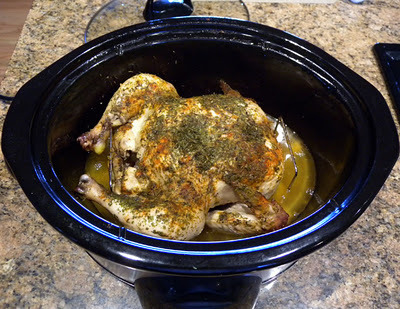 Click for the recipe:
Click for the recipe:
1 whole chicken. Mine was about 5 pounds.
1/2 cup onion, diced
3 cloves garlic, minced
salt & pepper
2 T butter, softened or melted
Juice of 1 lemon
Chopped parsley (I used dried, which was all I had)
1/4 t each, or to taste:
salt
thyme
paprika
Method
Rinse chicken and pat dry, inside and out. Sprinkle the cavity with a little salt and pepper, then put the onions and garlic inside. (If you're using fresh parsley, you can put some springs inside as well.) Put the chicken in the crockpot. Give the chicken a nice massage with the butter. Then pour the lemon juice over the chicken and sprinkle with the rest of the seasonings.
Cook about 8-9 hours on low, or 6 on high. (I used low, so I can't vouch for the timing on high. And I've learned that all slow cookers and crockpots are different--and if you live at 9100 feet, that can make a difference, too.)
Like this post? Please share by clicking one of the links below.
And I've hit a milestone with likes and followers, so be sure to check the Deals & Steals tab. You can't win if you don't enter. And on to the recipe.
I have a large crockpot with a rack insert, but you can probably adapt the recipe to slow roast in your oven. Or, roast it in your crockpot on a bed of root vegetables to keep the chicken from being immersed in its own juices.(Which might not be that bad, either.) Anyway, the recipe is modified from the cookbook that came with the crockpot.
Lemon Roasted Chicken
 Click for the recipe:
Click for the recipe:1 whole chicken. Mine was about 5 pounds.
1/2 cup onion, diced
3 cloves garlic, minced
salt & pepper
2 T butter, softened or melted
Juice of 1 lemon
Chopped parsley (I used dried, which was all I had)
1/4 t each, or to taste:
salt
thyme
paprika
Method
Rinse chicken and pat dry, inside and out. Sprinkle the cavity with a little salt and pepper, then put the onions and garlic inside. (If you're using fresh parsley, you can put some springs inside as well.) Put the chicken in the crockpot. Give the chicken a nice massage with the butter. Then pour the lemon juice over the chicken and sprinkle with the rest of the seasonings.
Cook about 8-9 hours on low, or 6 on high. (I used low, so I can't vouch for the timing on high. And I've learned that all slow cookers and crockpots are different--and if you live at 9100 feet, that can make a difference, too.)
Like this post? Please share by clicking one of the links below.
Published on November 16, 2011 05:00
November 15, 2011
Why Do I Write?
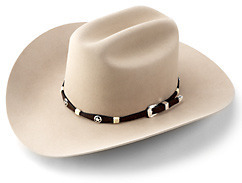 Today my guest is author Randy Rawls. I met Randy and his trademark cowboy hat when I attended my first SleuthFest in Florida many years ago. I'm delighted to have him here at Terry's Place, sharing why he writes. Welcome, Randy.
Today my guest is author Randy Rawls. I met Randy and his trademark cowboy hat when I attended my first SleuthFest in Florida many years ago. I'm delighted to have him here at Terry's Place, sharing why he writes. Welcome, Randy. Why do I write? I've had people ask me that since I began some fifteen-plus years ago. Most of them see the list of books I've had published and think I'm rolling in dough. Ha! The joke's on them. Sure, I've had good sales along the way, especially when you consider that each of them was published by an independent (small) publisher. But show a profit — no way. I've spent far more in promotion and travel than I've ever made.
So why do I write? It's a hobby, yes, but so is reading. And reading is a lot less frustrating. I used to be an avid golfer. Several times a week, I was on the course — after work and weekends — banging that little white ball around. But I gave it up. Tennis was another sport I enjoyed. Played a better game than my golf, but I let it slip away, too. Many other hobbies have come and gone: coaching, photography, bridge, small stakes poker, gardening, etc. But reading has stuck with me through each of those, and writing has hung around longer than the others.
So why do I write? Oh, like many others, I suppose there is that dream of fame and fortune, a book tour where I sit on the sets of all the big TV shows and discuss one of my books. Of picking up a newspaper or a magazine and seeing a starred review of my story. Of hosting a signing and having the room full of people, perhaps even overflowing. Of signing my name on the title page until my hand begins to cramp. Of seeing my characters converted to the big screen or the small screen. Of getting a royalty check that causes me to consider that special car I've always coveted. Yeah, all those things would be ever so wonderful, but, as we say down south, ain't gonna happen.
So why do I write? Simply put, because I enjoy it. I love the feel of the story rolling out in front of me, of not knowing where it will take me. I love to introduce a character and seeing that person take on a life of his/her own, a life I never considered when I put the name and the setting together. I love to find myself deep in a situation with my protagonist, then, as if someone turns on a spotlight, see the protag resolving the crime many chapters later. Sometimes, it's so strong I have to stop and write the climax chapter before I can continue the story development. Then there is the pleasure of walking the plot forward until it joins up with that climax. Yeah, that's fun.
But, why do I write? All of the above, but the real reason I write is for the thrill of having someone say, "I enjoyed your book." That is the icing on the cake, the single thing that makes all those hours of pounding the keyboard, all the editing and re-editing worthwhile. The simple pleasure of knowing someone found enjoyment in something I wrote. It doesn't get any better than that.
Which leads me to my THORNS ON ROSES. Many have been telling me they enjoyed Tom Jeffries and his trek to avenge the death of Mary Lou Smithson. They took strength from Tom's loyalty to his best friend, Mary Lou's stepfather. As long as there are fans who care, I'll continue to write — whether I show a profit or not.
For more about Randy, visit his web site at www.RandyRawls.com He'd love to hear from you and can be reached at RandyRawls@att.net. He's the multi-published author of the Ace Edwards, Dallas PI series and his latest release, THORNS ON ROSES, a South Florida thriller. In addition, he has several short stories which have been published in various anthologies.
Like this post? Please share by clicking one of the links below.
Published on November 15, 2011 05:00
November 14, 2011
Caring About Characters.
First -- Happy Birthday, Jason. Hard to believe you've hit the Big Four Oh.
Once a week, Hubster and I watch a Netflix movie. Since we've never been big moviegoers, we have a lot of "new to us" movies to pick from. And we just put whatever strikes our fancy in the queue, because trying to find something we know we'll both like would make choosing a movie a challenge. Our only "rule" is that we each promise to give the movie 15 minutes. So, if I pick a romantic comedy, or he picks a slapstick, we're not obligated to sit through the other person's movie. Often, rather than leave the room, we'll have laptops out and divide our attention between the movie and solitaire.
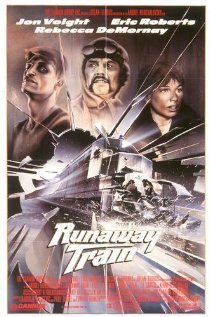 Recently, we've watched a series of train movies. We saw the remake of The Taking of Pelham 123, which we liked, so I ordered Unstoppable. When I tweeted the latter as our Netflix Nite selection, someone suggested Runaway Train a 1985 movie, so that went into the queue.
Recently, we've watched a series of train movies. We saw the remake of The Taking of Pelham 123, which we liked, so I ordered Unstoppable. When I tweeted the latter as our Netflix Nite selection, someone suggested Runaway Train a 1985 movie, so that went into the queue.
Unstoppable was pretty much the same story as Runaway Train. Both had the same basic conflict. A train was out of control and if it wasn't stopped, bad stuff would happen. The people responsible were of two sorts—those who had reasonable solutions, and those who were more concerned with saving face for the company.
Unstoppable was a compelling movie. Hubster left his laptop on the coffee table. Runaway Train should have been a compelling movie, but solitaire got more attention than the screen. Why? Runaway Train got decent reviews when it came out, but I wouldn't have given one, and it had nothing to do with the performances of the actors.
I can't speak for Hubster, but for me it was a simple matter of characters. The movie opened in a prison, and we watched two convicts escape. We saw the warden, a real bully. The prisoners were genuine bad guys—no redeeming qualities that we could see. They were in prison because they belonged there. These guys weren't cardboard, but for me, there was no reason to want them to succeed.
So, here are two totally unlikeable characters on an out of control train. If it crashes, they'll die. So what? Yes, the train needed to be stopped before it harmed innocents who lived along the route, but we never saw them, never had any reason to care about any of them as individuals. Unlikeable characters with redeeming character traits will give a viewer, or reader, a reason to care. Without those qualities, there's nothing to pull the reader in. In a movie, if nothing else, you've got the action on the screen to give you something to focus on.
The only character who evoked any sympathy was a young woman who worked for the railroad on the train. I suppose there was supposed to be some character growth for the convicts growth as they had to work with her, because she understood how things on the train worked. However, it was too little, too late for me.
As action-adventure, perhaps the film had some redeeming qualities. But, as readers of my blog know, I'm all about characters, and while I don't want them perfect, they have to have something that makes me care about them. When you're writing, make sure the characters are as important as the action and the plot. Because if nobody likes the characters, it won't matter what predicaments you put them in.
Tomorrow, my guest is author Randy Rawls, who's going to tell us why he keeps writing, even though he's never made the best-seller list.
Like this post? Please share by clicking one of the links below.
Once a week, Hubster and I watch a Netflix movie. Since we've never been big moviegoers, we have a lot of "new to us" movies to pick from. And we just put whatever strikes our fancy in the queue, because trying to find something we know we'll both like would make choosing a movie a challenge. Our only "rule" is that we each promise to give the movie 15 minutes. So, if I pick a romantic comedy, or he picks a slapstick, we're not obligated to sit through the other person's movie. Often, rather than leave the room, we'll have laptops out and divide our attention between the movie and solitaire.
 Recently, we've watched a series of train movies. We saw the remake of The Taking of Pelham 123, which we liked, so I ordered Unstoppable. When I tweeted the latter as our Netflix Nite selection, someone suggested Runaway Train a 1985 movie, so that went into the queue.
Recently, we've watched a series of train movies. We saw the remake of The Taking of Pelham 123, which we liked, so I ordered Unstoppable. When I tweeted the latter as our Netflix Nite selection, someone suggested Runaway Train a 1985 movie, so that went into the queue. Unstoppable was pretty much the same story as Runaway Train. Both had the same basic conflict. A train was out of control and if it wasn't stopped, bad stuff would happen. The people responsible were of two sorts—those who had reasonable solutions, and those who were more concerned with saving face for the company.
Unstoppable was a compelling movie. Hubster left his laptop on the coffee table. Runaway Train should have been a compelling movie, but solitaire got more attention than the screen. Why? Runaway Train got decent reviews when it came out, but I wouldn't have given one, and it had nothing to do with the performances of the actors.
I can't speak for Hubster, but for me it was a simple matter of characters. The movie opened in a prison, and we watched two convicts escape. We saw the warden, a real bully. The prisoners were genuine bad guys—no redeeming qualities that we could see. They were in prison because they belonged there. These guys weren't cardboard, but for me, there was no reason to want them to succeed.
So, here are two totally unlikeable characters on an out of control train. If it crashes, they'll die. So what? Yes, the train needed to be stopped before it harmed innocents who lived along the route, but we never saw them, never had any reason to care about any of them as individuals. Unlikeable characters with redeeming character traits will give a viewer, or reader, a reason to care. Without those qualities, there's nothing to pull the reader in. In a movie, if nothing else, you've got the action on the screen to give you something to focus on.
The only character who evoked any sympathy was a young woman who worked for the railroad on the train. I suppose there was supposed to be some character growth for the convicts growth as they had to work with her, because she understood how things on the train worked. However, it was too little, too late for me.
As action-adventure, perhaps the film had some redeeming qualities. But, as readers of my blog know, I'm all about characters, and while I don't want them perfect, they have to have something that makes me care about them. When you're writing, make sure the characters are as important as the action and the plot. Because if nobody likes the characters, it won't matter what predicaments you put them in.
Tomorrow, my guest is author Randy Rawls, who's going to tell us why he keeps writing, even though he's never made the best-seller list.
Like this post? Please share by clicking one of the links below.
Published on November 14, 2011 04:00
November 11, 2011
Friday Field Trip - CO Wolf and Wildlife Rescue Center
Since I'm still mired in edits, I'm rerunning an older post (April of 2010). These images were taken by Jason at the Colorado Wolf and Wildlife Rescue Center. Although it's close enough to our home so that we occasionally hear the wolves howling, we have yet to get there ourselves. Thanks to Jason, again, for sharing.
Welcome to my new followers. I'll be giving away more books soon, I'm sure. Only a few more clicks of the like button on the sidebar, and a few more followers will do it.
And it's Veteran's Day, 11/11/11. Take a moment to thank someone who's served his or her country. I don't normally do promotions here, but I'm making an exception. If you're looking for something to read, with all proceeds donated to the Veteran's Research Corporation, you might want to check out the SEAL of my Dreams anthology. I know many of the contributing authors, and I've already pre-ordered my copy. Or just enjoy the cover!
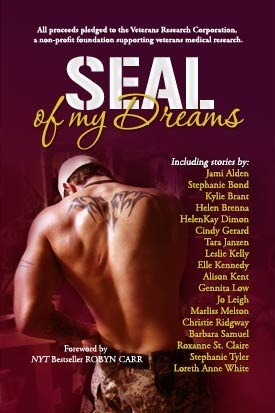
And now, away from Seals and onto Wolves. (And a fox)
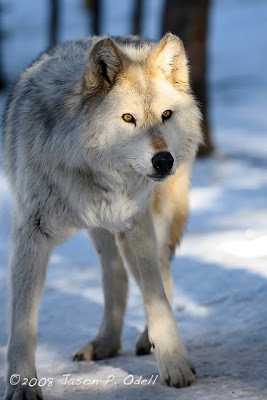
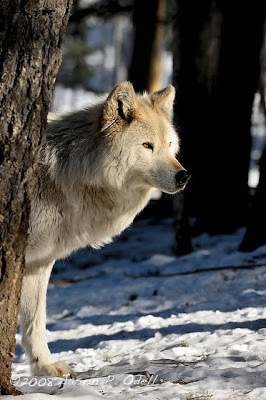
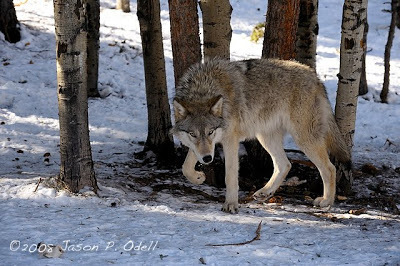
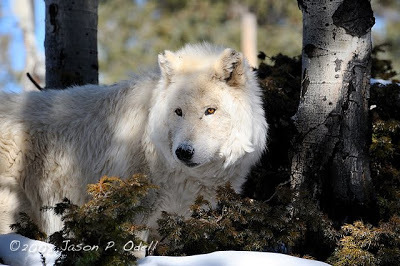
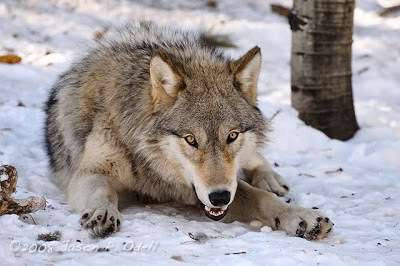
And, for a little variety, here's a fox.

Want more? Click here for a look at lots more phenomenal shots.
Like this post? Please share by clicking one of the links below.
Welcome to my new followers. I'll be giving away more books soon, I'm sure. Only a few more clicks of the like button on the sidebar, and a few more followers will do it.
And it's Veteran's Day, 11/11/11. Take a moment to thank someone who's served his or her country. I don't normally do promotions here, but I'm making an exception. If you're looking for something to read, with all proceeds donated to the Veteran's Research Corporation, you might want to check out the SEAL of my Dreams anthology. I know many of the contributing authors, and I've already pre-ordered my copy. Or just enjoy the cover!

And now, away from Seals and onto Wolves. (And a fox)





And, for a little variety, here's a fox.

Want more? Click here for a look at lots more phenomenal shots.
Like this post? Please share by clicking one of the links below.
Published on November 11, 2011 04:00
November 10, 2011
Digital Publishing Workshop Recap
What I'm reading: The Reversal, by Michael Connelly
I'm closing in on another giveaway. I need a few more likes and follows (see the sidebar).
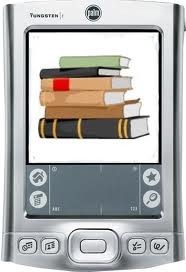 I'm continuing with recaps of workshops from the Emerald City Conference. Since I'm working on getting my next book, DEADLY SECRETS, ready for digital publication, I thought I'd share another workshop given by Angela James. She spoke about digital publishing, and gave a fascinating overview of the topic. This is a short post, and more like bullet points, because I'm working on edits! But I've got a prize for anyone who can answer my questions, which I hope makes up for it. Quiz at the end of the post.
I'm continuing with recaps of workshops from the Emerald City Conference. Since I'm working on getting my next book, DEADLY SECRETS, ready for digital publication, I thought I'd share another workshop given by Angela James. She spoke about digital publishing, and gave a fascinating overview of the topic. This is a short post, and more like bullet points, because I'm working on edits! But I've got a prize for anyone who can answer my questions, which I hope makes up for it. Quiz at the end of the post.
Digital publishing has a North American focus. We tend to think that everyone has the same options and opportunities, but that's not the case. But today, almost everything is available in digital format. More and more authors are taking advantage of being able to publish their own books, be they original or previously published titles. As she put it, "Self publishing is the new black."
In 1999, the Baen Free Library appeared (with DRM free books!)
In 2000, Stephen King self published his first e-book, but he considered it a failure, selling "only" 500,000 copies in 48 hours.
Romance readers were instrumental in the growth of e-publishing as readers found they could get books and read them in the privacy of their homes. (Sad that there's still a stigma on being a romance reader or writer.) Ellora's Cave was a leader in the field.
The first Kindle appeared in 2007, but Sony had the first "new" e-reader long before that. (And this is NOT the answer to question #3 in my quiz)
In April, 2009, J.A. Konrath published his first e-book.
In 2010, the iPad made its debut.
Here's a short quiz.
1. When was the first ebook published?
2. What was it?
3. And what was the first dedicated e-reader? (My first reader, an eBookwise, was a spinoff of this one, and I still have it.)
Email your answers to me contest @ terryodell.com (Remove spaces, and please DON'T put them in the comments, to be fair to all.) I'll send everyone who gets them right a coupon for a free Smashwords download of one of my books.
Like this post? Please share by clicking one of the links below.
I'm closing in on another giveaway. I need a few more likes and follows (see the sidebar).
 I'm continuing with recaps of workshops from the Emerald City Conference. Since I'm working on getting my next book, DEADLY SECRETS, ready for digital publication, I thought I'd share another workshop given by Angela James. She spoke about digital publishing, and gave a fascinating overview of the topic. This is a short post, and more like bullet points, because I'm working on edits! But I've got a prize for anyone who can answer my questions, which I hope makes up for it. Quiz at the end of the post.
I'm continuing with recaps of workshops from the Emerald City Conference. Since I'm working on getting my next book, DEADLY SECRETS, ready for digital publication, I thought I'd share another workshop given by Angela James. She spoke about digital publishing, and gave a fascinating overview of the topic. This is a short post, and more like bullet points, because I'm working on edits! But I've got a prize for anyone who can answer my questions, which I hope makes up for it. Quiz at the end of the post.Digital publishing has a North American focus. We tend to think that everyone has the same options and opportunities, but that's not the case. But today, almost everything is available in digital format. More and more authors are taking advantage of being able to publish their own books, be they original or previously published titles. As she put it, "Self publishing is the new black."
In 1999, the Baen Free Library appeared (with DRM free books!)
In 2000, Stephen King self published his first e-book, but he considered it a failure, selling "only" 500,000 copies in 48 hours.
Romance readers were instrumental in the growth of e-publishing as readers found they could get books and read them in the privacy of their homes. (Sad that there's still a stigma on being a romance reader or writer.) Ellora's Cave was a leader in the field.
The first Kindle appeared in 2007, but Sony had the first "new" e-reader long before that. (And this is NOT the answer to question #3 in my quiz)
In April, 2009, J.A. Konrath published his first e-book.
In 2010, the iPad made its debut.
Here's a short quiz.
1. When was the first ebook published?
2. What was it?
3. And what was the first dedicated e-reader? (My first reader, an eBookwise, was a spinoff of this one, and I still have it.)
Email your answers to me contest @ terryodell.com (Remove spaces, and please DON'T put them in the comments, to be fair to all.) I'll send everyone who gets them right a coupon for a free Smashwords download of one of my books.
Like this post? Please share by clicking one of the links below.
Published on November 10, 2011 04:00
November 9, 2011
What's Cooking Wednesday - Karen C's Crab or Shrimp Muffins
Frequent visitor and commenter, Karen C, has accepted my invitation to share a recipe, and I thank her (and I know you will, too). Plus, this gives her an extra entry in my contest...hint, hint.
Crab or Shrimp Muffins
1 Pkg. English Muffins (I use Thomas')
½ cup butter or margarine, softened (1 stick)
5 oz. Kraft Old English Cheese (I use Cheddar)
7 oz can Crab or Shrimp
1 Tbsp. Minced Onion (I use dehydrated)
½ Tsp. Garlic Powder
½ Tsp. Salt
¼ Tsp. Pepper
Paprika
Preheat oven to 350 degrees Fahrenheit.
Cut muffins in half. Beat butter and cheese; add spices. Drain crab or shrimp and pat dry (on paper towel). Add to mixture and mix thoroughly. Spread on muffins and sprinkle with Paprika.
Bake on cookie sheet for 12 - 15 minutes. Cut into halves or quarters and serve immediately.
The muffins can be served as appetizers or for breakfast.
Like this post? Please share by clicking one of the links below.
Crab or Shrimp Muffins
1 Pkg. English Muffins (I use Thomas')
½ cup butter or margarine, softened (1 stick)
5 oz. Kraft Old English Cheese (I use Cheddar)
7 oz can Crab or Shrimp
1 Tbsp. Minced Onion (I use dehydrated)
½ Tsp. Garlic Powder
½ Tsp. Salt
¼ Tsp. Pepper
Paprika
Preheat oven to 350 degrees Fahrenheit.
Cut muffins in half. Beat butter and cheese; add spices. Drain crab or shrimp and pat dry (on paper towel). Add to mixture and mix thoroughly. Spread on muffins and sprinkle with Paprika.
Bake on cookie sheet for 12 - 15 minutes. Cut into halves or quarters and serve immediately.
The muffins can be served as appetizers or for breakfast.
Like this post? Please share by clicking one of the links below.
Published on November 09, 2011 04:00
November 8, 2011
Finding Inspiration
Today I'm welcoming back author, photographer, and pilot Mark Danielson to Terry's Place.
 Sometimes it's easier to find Nemo than it is inspiration. You sit down to write and then mindlessly stare at the silent keyboard and blank screen. The closer you are to a deadline, the more difficult it is to find the words. Authors refer to this as writer's block. As a pun, Writer's Block is also the title to my next murder mystery, which happened to be one of the easiest novels to write. Since my characters led me through this story, I never had to search for words and it was fun learning from them. Now they are leading me through its sequel.
Sometimes it's easier to find Nemo than it is inspiration. You sit down to write and then mindlessly stare at the silent keyboard and blank screen. The closer you are to a deadline, the more difficult it is to find the words. Authors refer to this as writer's block. As a pun, Writer's Block is also the title to my next murder mystery, which happened to be one of the easiest novels to write. Since my characters led me through this story, I never had to search for words and it was fun learning from them. Now they are leading me through its sequel.
People often ask, "Where do you get your ideas?" Honestly, most have been fermenting for some time, and when some event triggers my brain, suddenly I'm delving into the new story. But sometimes my ideas come out of the blue, perhaps in a dream. This was the case for the sequel to Writer's Block while I was well into a different one. I ended up postponing that story to write the new sequel based on a true haunting in Fort Worth. Both stories are fun.
The problem with subconscious thoughts is they are so transient they may be lost if not immediately written down. Later, I'll create a Word document to keep these ideas for future use. Thankfully a few key words mind can usually take me back to the story behind the thought. Assuming I don't lose that document, I probably have enough ideas to last decades.
The network news is always a source of inspiration. The more emotional the story, the more involved I become. Facebook provides plenty of photos and stories that compel me to comment. Sometimes I find stories there, too. Take, for example, a recent photo of a lone bald eagle sitting atop a tombstone in a veteran's cemetery on a misty day. A million thoughts flashed through my head when I saw that photo. Whether this leads to a new novel or not, that image is everlasting.
First drafts don't have to start with the beginning. In fact, many mysteries start with the ending and let the story explain what happened. It's always good idea to jot notes as ideas pop up while you're writing. You can always fill in the details once you know where your story is heading. A quality outline can help your story will flow.
The most important element in creating a first draft is ensuring the document has been saved and backed up. I say this from experience -- losing documents is beyond frustrating. If you're on the road, e-mail it to yourself or save it to a flash drive. At home, use an external hard drive that automatically backs up documents. Once a document is gone, it is virtually impossible to recreate.
The key to finding inspiration is to observe everything around you. By doing so, inspiration will find you. Once your heart starts pounding, you'll know you're onto something, and everything you observed in life will eventually find its place in your story. Most importantly, have fun writing it and your audience will enjoy reading it.
Mark W. Danielson is an international airline pilot and mystery novelist. He is among a group of authors that write for Murderous Musings. Check out his website for chapter previews, travels, pertinent articles, and some miscellaneous fun stuff. Writer's Block is scheduled for release November 15, 2011.
Like this post? Please share by clicking one of the links below.
 Sometimes it's easier to find Nemo than it is inspiration. You sit down to write and then mindlessly stare at the silent keyboard and blank screen. The closer you are to a deadline, the more difficult it is to find the words. Authors refer to this as writer's block. As a pun, Writer's Block is also the title to my next murder mystery, which happened to be one of the easiest novels to write. Since my characters led me through this story, I never had to search for words and it was fun learning from them. Now they are leading me through its sequel.
Sometimes it's easier to find Nemo than it is inspiration. You sit down to write and then mindlessly stare at the silent keyboard and blank screen. The closer you are to a deadline, the more difficult it is to find the words. Authors refer to this as writer's block. As a pun, Writer's Block is also the title to my next murder mystery, which happened to be one of the easiest novels to write. Since my characters led me through this story, I never had to search for words and it was fun learning from them. Now they are leading me through its sequel.People often ask, "Where do you get your ideas?" Honestly, most have been fermenting for some time, and when some event triggers my brain, suddenly I'm delving into the new story. But sometimes my ideas come out of the blue, perhaps in a dream. This was the case for the sequel to Writer's Block while I was well into a different one. I ended up postponing that story to write the new sequel based on a true haunting in Fort Worth. Both stories are fun.
The problem with subconscious thoughts is they are so transient they may be lost if not immediately written down. Later, I'll create a Word document to keep these ideas for future use. Thankfully a few key words mind can usually take me back to the story behind the thought. Assuming I don't lose that document, I probably have enough ideas to last decades.
The network news is always a source of inspiration. The more emotional the story, the more involved I become. Facebook provides plenty of photos and stories that compel me to comment. Sometimes I find stories there, too. Take, for example, a recent photo of a lone bald eagle sitting atop a tombstone in a veteran's cemetery on a misty day. A million thoughts flashed through my head when I saw that photo. Whether this leads to a new novel or not, that image is everlasting.
First drafts don't have to start with the beginning. In fact, many mysteries start with the ending and let the story explain what happened. It's always good idea to jot notes as ideas pop up while you're writing. You can always fill in the details once you know where your story is heading. A quality outline can help your story will flow.
The most important element in creating a first draft is ensuring the document has been saved and backed up. I say this from experience -- losing documents is beyond frustrating. If you're on the road, e-mail it to yourself or save it to a flash drive. At home, use an external hard drive that automatically backs up documents. Once a document is gone, it is virtually impossible to recreate.
The key to finding inspiration is to observe everything around you. By doing so, inspiration will find you. Once your heart starts pounding, you'll know you're onto something, and everything you observed in life will eventually find its place in your story. Most importantly, have fun writing it and your audience will enjoy reading it.
Mark W. Danielson is an international airline pilot and mystery novelist. He is among a group of authors that write for Murderous Musings. Check out his website for chapter previews, travels, pertinent articles, and some miscellaneous fun stuff. Writer's Block is scheduled for release November 15, 2011.
Like this post? Please share by clicking one of the links below.
Published on November 08, 2011 05:00
November 7, 2011
Writing With Triggers
What I'm reading: An Invitation to Sin, by Jo Beverley, Sally Mackenzie, Vanessa Kelly & Katilin O'Riley; Island Nights, by P.J. Mellor
Only 5 more likes and 12 more followers before I give away more books. And don't forget to sign up for my newsletter on my website , which also enters you in the giveaway. Details on the Deals and Steals tab.
Today it's another recap of an Emerald City Writers Conference workshop, this one given by Bernadette Pajer. She called her approach "Trigger Writing" and she made some interesting points, giving another way to look at the "show don't tell" rule.
Pajer defined a trigger as a carefully crafted description, rich in innuendo or emotional responses. She said the beauty of triggers is that they engage readers by allowing them to be an active participant in the story.
When you use triggers, you're using implications and connotations rather than denotations, or strict definitions of the words. You're trusting that the reader will have the same associations with the word that you're trying to get across in your prose.
For example, if you put a Dumpster in a scene, odds are your readers are going to see and smell the scene, even if you don't go into details about what it actually looks like or smells like.
How much description do you need? Here, Pajer recommends that you go into a lot of detail only when the details are important to showing intense conflict or emotion—the big scenes the reader has been anticipating. Otherwise, a few triggers can ground the reader without slowing the pace. You're tapping into their experiences, memories, and emotions. They will bring these into play as they read without being pulled out of the story.
For example, using the Dumpster example: If it's just there to set the scene, simply calling it a Dumpster should be enough for the reader. But if the Dumpster is important to your story—perhaps your character is going to have to climb into it in order to find a lost object, or a clue to a crime, then you'll want to spend more time, elaborating, and adding more triggers. Is it outside a restaurant, overflowing with drippy, slimy trash bags filled with rotten food?
The challenge, Pajer pointed out, is that you as the author have to find the balance between what you're going to provide and what you're going to trust the reader to understand on their own.
Some of her checkpoints:
1. Does the detail slow the action? Here, you'll want only essential trigger words.
2. Does the description simply add atmosphere or serve as a transition? Again, cut and watch the pacing.
3. Does the description add new, vital information? You can get away with more descriptions here.
4. Is it a key scene? Have you built to this scene so your reader is anticipating the reveal? Here, slow down, flesh out details, and immerse the reader in the moment.
The bottom line? You have to engage your reader. The cover of my NOOK color has a quote from Samuel Johnson: "A writer only begins a book. A reader finishes it."
Tomorrow, Mark Danielson is a returning guest. He's talking about finding inspiration.
Like this post? Please share by clicking one of the links below.
Only 5 more likes and 12 more followers before I give away more books. And don't forget to sign up for my newsletter on my website , which also enters you in the giveaway. Details on the Deals and Steals tab.

Today it's another recap of an Emerald City Writers Conference workshop, this one given by Bernadette Pajer. She called her approach "Trigger Writing" and she made some interesting points, giving another way to look at the "show don't tell" rule.
Pajer defined a trigger as a carefully crafted description, rich in innuendo or emotional responses. She said the beauty of triggers is that they engage readers by allowing them to be an active participant in the story.
When you use triggers, you're using implications and connotations rather than denotations, or strict definitions of the words. You're trusting that the reader will have the same associations with the word that you're trying to get across in your prose.
For example, if you put a Dumpster in a scene, odds are your readers are going to see and smell the scene, even if you don't go into details about what it actually looks like or smells like.
How much description do you need? Here, Pajer recommends that you go into a lot of detail only when the details are important to showing intense conflict or emotion—the big scenes the reader has been anticipating. Otherwise, a few triggers can ground the reader without slowing the pace. You're tapping into their experiences, memories, and emotions. They will bring these into play as they read without being pulled out of the story.
For example, using the Dumpster example: If it's just there to set the scene, simply calling it a Dumpster should be enough for the reader. But if the Dumpster is important to your story—perhaps your character is going to have to climb into it in order to find a lost object, or a clue to a crime, then you'll want to spend more time, elaborating, and adding more triggers. Is it outside a restaurant, overflowing with drippy, slimy trash bags filled with rotten food?
The challenge, Pajer pointed out, is that you as the author have to find the balance between what you're going to provide and what you're going to trust the reader to understand on their own.
Some of her checkpoints:
1. Does the detail slow the action? Here, you'll want only essential trigger words.
2. Does the description simply add atmosphere or serve as a transition? Again, cut and watch the pacing.
3. Does the description add new, vital information? You can get away with more descriptions here.
4. Is it a key scene? Have you built to this scene so your reader is anticipating the reveal? Here, slow down, flesh out details, and immerse the reader in the moment.
The bottom line? You have to engage your reader. The cover of my NOOK color has a quote from Samuel Johnson: "A writer only begins a book. A reader finishes it."
Tomorrow, Mark Danielson is a returning guest. He's talking about finding inspiration.
Like this post? Please share by clicking one of the links below.
Published on November 07, 2011 04:00
November 4, 2011
Friday Field Trip - My Hard Drive
No theme today. I was just poking around my hard drive and randomly selected some images to share. I'd love others to share theirs.
Don't forget the contests. I'm only 5 "likes" and 12 follows away from another giveaway.

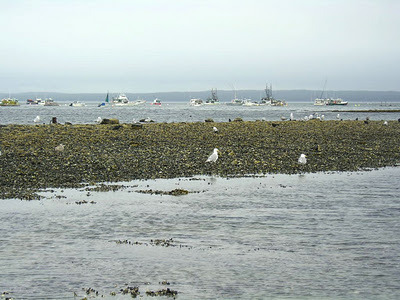


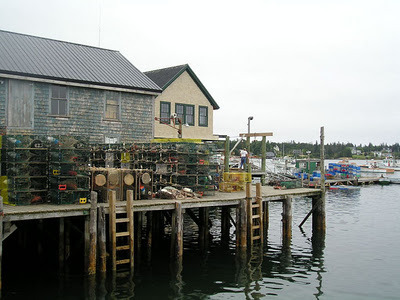
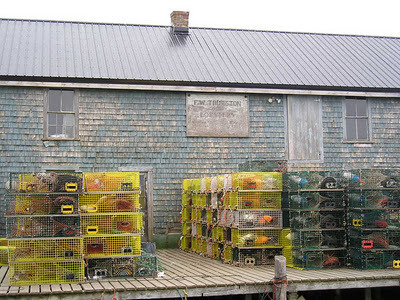

 Like this post? Please share by clicking one of the links below.
Like this post? Please share by clicking one of the links below.
Don't forget the contests. I'm only 5 "likes" and 12 follows away from another giveaway.







 Like this post? Please share by clicking one of the links below.
Like this post? Please share by clicking one of the links below.
Published on November 04, 2011 04:00
November 3, 2011
Branding Is For More Than Cattle
What I'm reading: Pride and Prejudice by Jane Austin (don't laugh; I never read it). And I'm reading it primarily because I won a copy of Pride and Prejudice: The Jewess and the Gentile by Lev Raphael, and figured I needed to read the original before the mashup.
I picked up more books at the Emerald City conference, and many of them are going into my Giveaway stack. Be sure you check the Deals and Steals tab for all the different ways you can enter the contest. I'm very close to Giveaway #2 with my "likes"
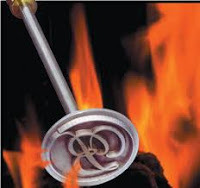 I hope you'll read through today's post, because I'd like some opinions, and I've asked a few questions at the end.
I hope you'll read through today's post, because I'd like some opinions, and I've asked a few questions at the end.
At Emerald City, I went to Angela James's workshop on Branding. She's an editor for Carina Press, which is part of Harlequin, and she made some excellent points. She also spoke about digital publishing in another workshop, which I'll save for another post.
As to Branding: it's more than a tag line. Branding is how you become known to readers.
1. Branding is a promise. She used the example of McDonald's. When you go into a McDonald's, you have expectations, because they have a very strong brand. If tomorrow, they said, "we're going to become a vegetarian restaurant", consumers would feel cheated.
2. Branding is how you stand out from the crowd. JD Robb makes a different promise to her readers than she does as Nora Roberts. Branding creates marketing opportunities.
3. Branding draws consumers in. Angela spoke of seeing a store in a shopping center called, "Wine Anthology." It immediately called to her, and she thought it would be a great place to shop. Then she noticed that there was a sign saying, "Clark Circle Liquors is now Wine Anthology." The image of Clark Circle Liquors was totally different from Wine Anthology, calling up images of seedy men carrying open bottles in brown paper bags.
An interesting point she made here was that for a mid-list author, negative reviews are not as harmful as they can be for best-selling authors. If readers aren't familiar with your work, then what they're more likely to remember is the name, and not the connection to the negative review. It's one more "touch."
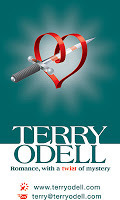
She suggested that a brand should be clear rather than clever. She had 10 points about getting your brand.
1. Consistently publish quality books.
2. Write in a consistent voice/style.
3. Focus on one genre or style.
4. Write connected books.
5. Publish connected books close together.
6. Spend time marketing yourself every week—newsletters, Facebook, Twitter, etc.
7. Have a good website.
8. Have a career plan.
9. Develop your brand statement.
10. Consistently publish quality books (yes, #10 is the same as #1. It's the most important thing you should do.
Ok, so here's my question. I was fortunate enough to win a free professional video book trailer from Visual Quill. What's your take on trailers? I have to remember than just because I don't find them useful doesn't mean others don't enjoy them. Also – what's your feeling about marketing a book vs marketing the author's brand?
Like this post? Please share by clicking one of the links below.
I picked up more books at the Emerald City conference, and many of them are going into my Giveaway stack. Be sure you check the Deals and Steals tab for all the different ways you can enter the contest. I'm very close to Giveaway #2 with my "likes"
 I hope you'll read through today's post, because I'd like some opinions, and I've asked a few questions at the end.
I hope you'll read through today's post, because I'd like some opinions, and I've asked a few questions at the end. At Emerald City, I went to Angela James's workshop on Branding. She's an editor for Carina Press, which is part of Harlequin, and she made some excellent points. She also spoke about digital publishing in another workshop, which I'll save for another post.
As to Branding: it's more than a tag line. Branding is how you become known to readers.
1. Branding is a promise. She used the example of McDonald's. When you go into a McDonald's, you have expectations, because they have a very strong brand. If tomorrow, they said, "we're going to become a vegetarian restaurant", consumers would feel cheated.
2. Branding is how you stand out from the crowd. JD Robb makes a different promise to her readers than she does as Nora Roberts. Branding creates marketing opportunities.
3. Branding draws consumers in. Angela spoke of seeing a store in a shopping center called, "Wine Anthology." It immediately called to her, and she thought it would be a great place to shop. Then she noticed that there was a sign saying, "Clark Circle Liquors is now Wine Anthology." The image of Clark Circle Liquors was totally different from Wine Anthology, calling up images of seedy men carrying open bottles in brown paper bags.
An interesting point she made here was that for a mid-list author, negative reviews are not as harmful as they can be for best-selling authors. If readers aren't familiar with your work, then what they're more likely to remember is the name, and not the connection to the negative review. It's one more "touch."

She suggested that a brand should be clear rather than clever. She had 10 points about getting your brand.
1. Consistently publish quality books.
2. Write in a consistent voice/style.
3. Focus on one genre or style.
4. Write connected books.
5. Publish connected books close together.
6. Spend time marketing yourself every week—newsletters, Facebook, Twitter, etc.
7. Have a good website.
8. Have a career plan.
9. Develop your brand statement.
10. Consistently publish quality books (yes, #10 is the same as #1. It's the most important thing you should do.
Ok, so here's my question. I was fortunate enough to win a free professional video book trailer from Visual Quill. What's your take on trailers? I have to remember than just because I don't find them useful doesn't mean others don't enjoy them. Also – what's your feeling about marketing a book vs marketing the author's brand?
Like this post? Please share by clicking one of the links below.
Published on November 03, 2011 04:00



